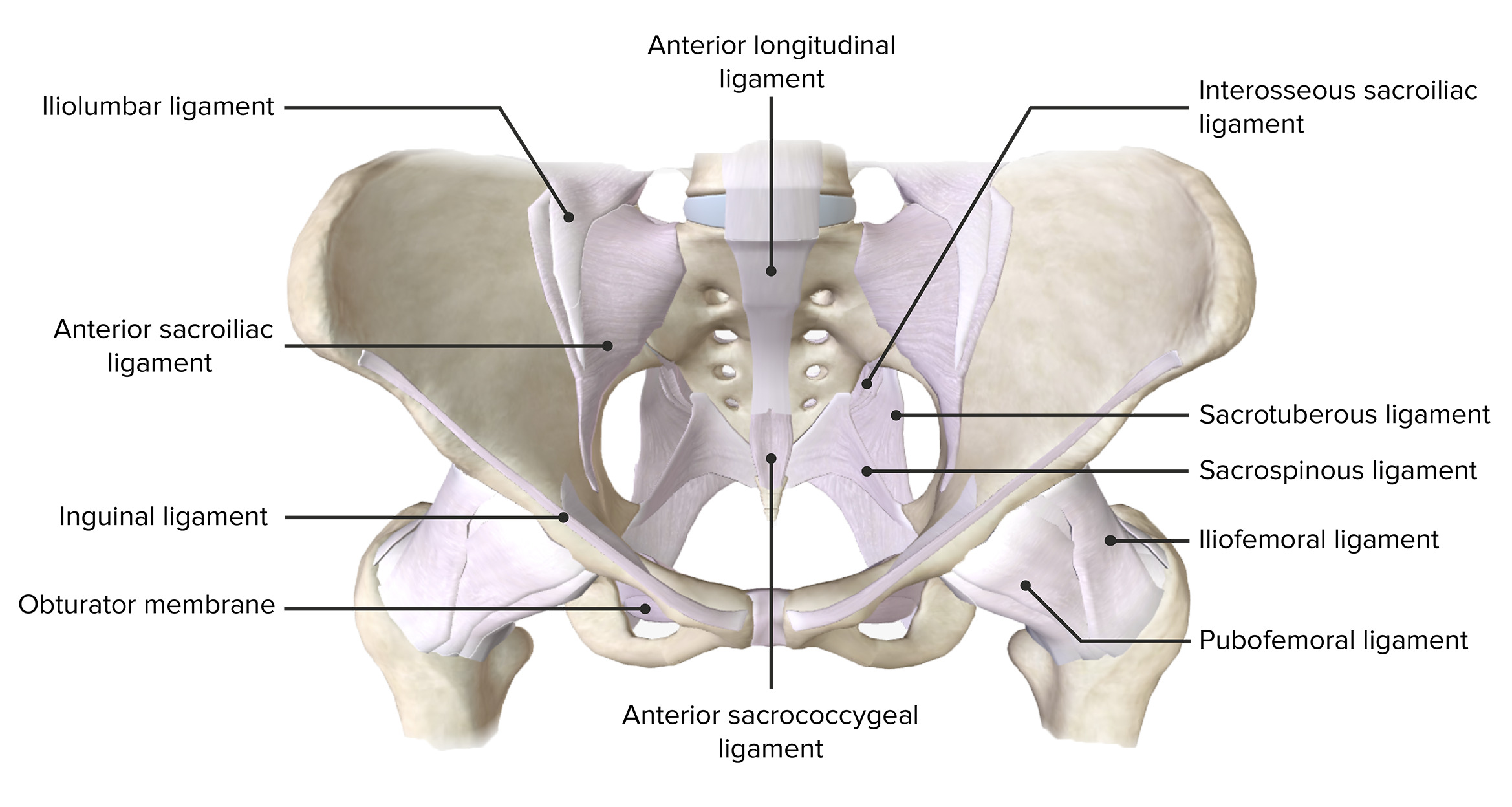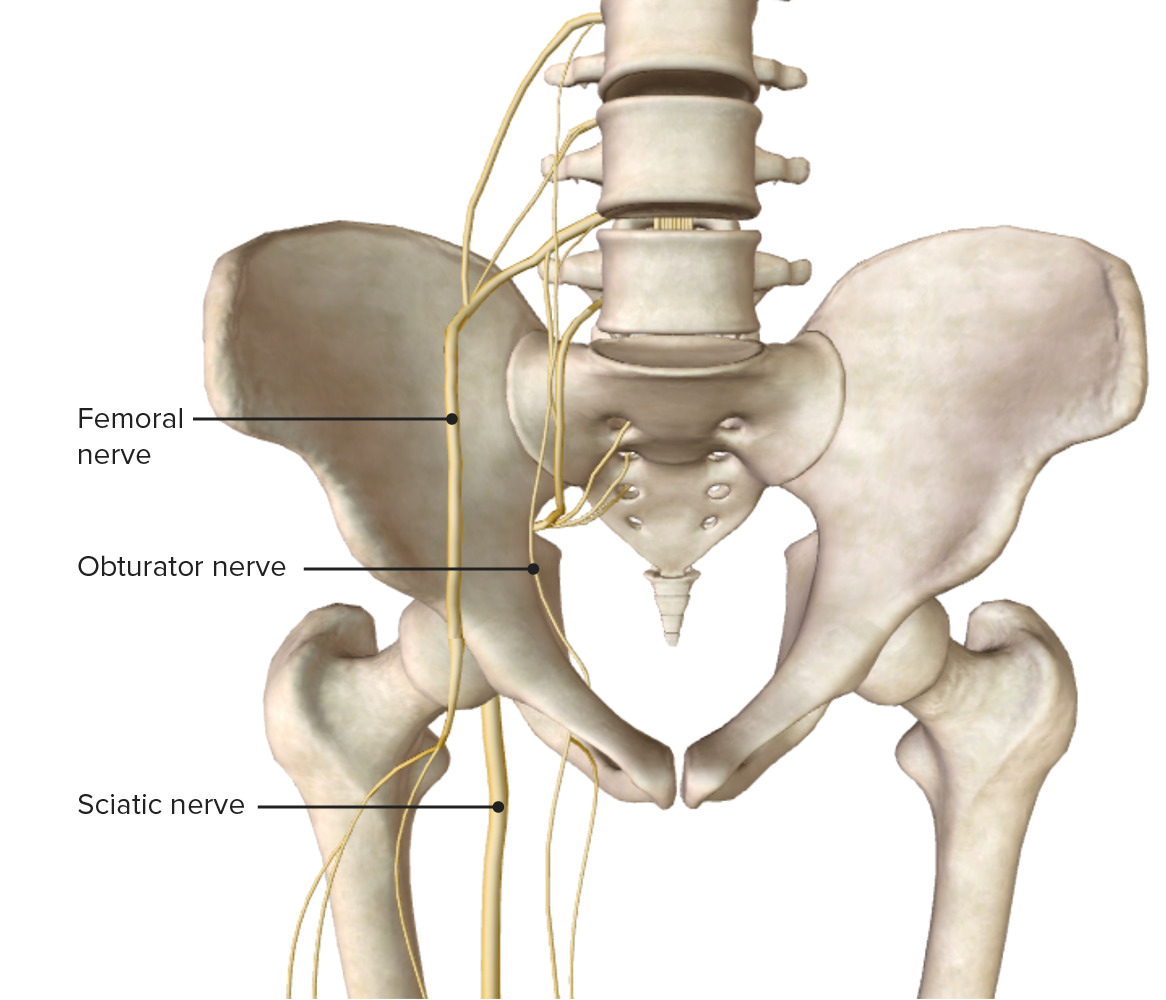Playlist
Show Playlist
Hide Playlist
Ilium
00:01 So now let's move on and look at one of these bones specifically which is the ileum. 00:07 So here we're looking at the same image we saw previously. 00:09 So we're looking at the right pelvic bones or lateral surface. 00:13 And here we've got a closer view of the ilium, which you can see is making up part of the acetabulum as well. 00:20 Here we can see that it's actually that part of the ilium, that's making up the acetabulum is really the lower 2/5ths of the acetabulum. 00:28 And then we have this much higher broad area where we can see it's really spanning out in a wing like fashion, we can see we've got a gluteal service, this forms an important attachment site for the gluteal bones. 00:40 And here we can see we have that sacropelvic surface where it's going on to unites with the sacrum. 00:47 So here we're looking at it on it's more medial aspects, we're now looking at the ilium bone from his more medial aspects, notice we can't see the acetabulum now, and where that sacropelvic surface is indicated, that's where it's going on to form that union with the sacrum. 01:05 Then on this internal medial surface, we see the iliac surface that's an important surface for the iliopsoas muscle for example to come from especially the ileap part of it. 01:17 Here, we then continue looking at the ilium again, we're looking at its lateral surface is very superior border is known as the iliac crest. 01:26 And here we can see a number of aspects to that iliac crest, especially if we move more anteriorly to where we have the tubercle of the iliac crest. 01:36 And here we can see a number of parts, the inner lip, the outer lip, intermediate zone. 01:40 Again, be careful to make sure you know if you need to know this level of detail, but essentially we have a series of surfaces there that are making up that tubercle of the iliac crest. 01:51 So now let's have a look at the anterior and some posterior borders of the ilium. 01:56 And we can see inferiorly we have the acid tablet again, but working very much on the anterior surface heading down towards the acetabulum. 02:04 We have a couple of anteriorly producing kind of protuberances we call them spines. 02:10 So here we have the anterior superior iliac spine because it's most anterior and its superior, and then more inferiorly, we're going to have the anterior inferior iliac spine and the spines a little protuberances elevations on the surface of the bone which help for muscle attachments. 02:28 As we have these on the anterior surface. 02:31 If we look to the posterior surface, we can also see a similar arrangement. 02:35 Here we have posterior iliac spines, a superior version, and then beneath it, we have an inferior version. 02:42 And then just below the posterior inferior iliac spine, we have an indentation within this posterior border. 02:49 And that's known as a greater sciatic notch. 02:51 We'll come back to that later on when we look at various muscles around the hip joint. 02:55 So a series of spines, iliac spines on the anterior and posterior border of the ilium. 03:03 Now let's have a look again at this lateral surface of the ilium. 03:06 And really, we see it's a nice smooth surface and we call it the gluteal surface. 03:12 And on this gluteal surface we find we have a series of just demarcations that help us orientate the origin sites of various gluteal muscles. 03:21 Again, their position helps us with the anatomical terminology of what we call them. 03:26 So we have anterior inferior and posterior gluteal lines. 03:30 And again, these help to remind us where various muscle attachments come from. 03:35 If we continue looking at the ilium now, we're going to look at the medial surface of the ilium we can see most posteriorly we have the iliac tuberosity, which is leading to that surface, the articular surface with the sacrum that forms the sacral pelvic surface for the sacral. 03:52 Pelvic joint we can see there at a hearing to the sacrum. 03:55 And then more broadly on this iliac surface, we have the iliac fossa. 04:00 This is an important site, which contains the iliac muscle, which is important combination with the psoas muscle to form iliopsoas muscle that passes down to the thigh.
About the Lecture
The lecture Ilium by James Pickering, PhD is from the course Osteology and Surface Anatomy of the Lower Limbs.
Included Quiz Questions
What is the superior border of the ilium?
- Iliac crest
- Acetabulum
- Anterior inferior iliac spine
- Posterior superior iliac spine
- Posterior inferior iliac spine
The ilium forms how much of the acetabulum?
- 40%
- 60%
- 80%
- 20%
- 100%
What is part of the anterior border of the ilium?
- Anterior superior iliac spine
- Posterior inferior iliac spine
- Greater sciatic notch
- Anterior gluteal line
- Inferior gluteal line
Customer reviews
5,0 of 5 stars
| 5 Stars |
|
5 |
| 4 Stars |
|
0 |
| 3 Stars |
|
0 |
| 2 Stars |
|
0 |
| 1 Star |
|
0 |





